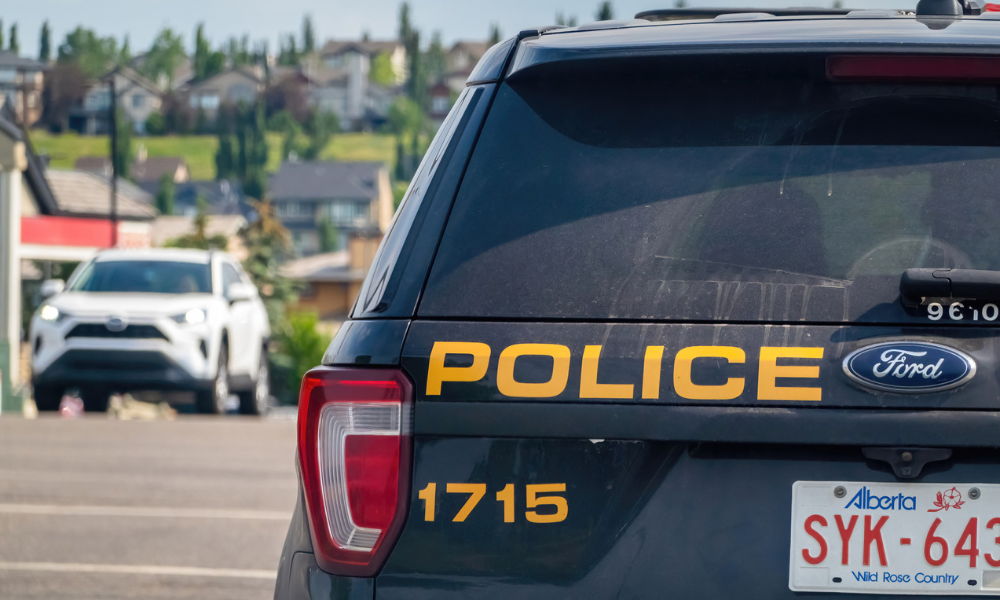
The officer was taking a witness statement in his cruiser when a truck rear-ended his vehicle

The Alberta Court of King's Bench has absolved a police officer from liability over a vehicle collision, finding that he followed protocol.
In Denhoed v Griffiths, 2023 ABKB 557, Angela Denhoed's vehicle struck a deer on westbound Highway 3 as it exited Lethbridge, Alberta. The police were called to the scene. While she was seated in the front passenger seat of a police cruiser, providing a statement to Constable Joseph Kanyo, a pickup truck struck the cruiser from behind. The defendant, Daryl Griffiths, was driving the truck.
Denhoed alleged that she sustained injuries from the collision. She commenced an action premised on negligence against Griffiths, Constable Kanyo, the City of Lethbridge, and the Lethbridge Police Service (LPS). The actions against the city and LPS were premised on their vicarious liability for any negligence of Kanyo.
The Alberta Court of King's Bench noted that Kanyo, the city, and LPS admitted that they owed a duty of care to Denhoed arising during their response to and investigating the deer collision. Denhoed pointed out that there were lapses in police conduct during the investigation, particularly how the police cruiser was parked on the highways, taking Denhoed's collision statement in the police cruiser while parked on the highway, and the blinding effect of the emergency lights on oncoming traffic.
The court explained that the standard of care expected of a police officer exercising his duties is that of a reasonable police officer in similar circumstances. The court noted that the Use of Highways and Rules of the Road Regulation placed limitations on how a vehicle may be parked on a highway outside an urban area. In particular, a driver shall not park a vehicle on a roadway when it is practicable to park it off the roadway. Despite this, a driver can park on a roadway, parking lane or shoulder in circumstances where the vehicle is incapable of moving under its power, an emergency arises, or it is otherwise permitted by law.
Furthermore, the court recognized that in the exceptional circumstance where a vehicle must be parked on a roadway, a person may only do so if there is both "a clear and unobstructed space opposite the vehicle for free passage of vehicles on the roadway" and "a clear view of the parked vehicle for a distance of 60 metres in both directions."
The court also considered a training protocol developed by LPS. The protocol guides officers on how to initiate safe traffic stops. The protocol requires an officer to maintain control over the site, the stopped vehicle and the human interaction. The protocol also recommends the officer position the cruiser 10 to 15 metres behind the subject vehicle and partially intrude in the adjacent lane to shut down the lane in which the car is stopped and provide adequate room for the officer to work.
The purpose of this parking protocol is to force oncoming traffic to slow or move out of the driving lane and create a buffer zone for officers exiting and entering their cruisers, thereby reducing the likelihood of them or anyone at the scene being struck by an oncoming vehicle.
The court found that Kanyo parked his cruiser in a manner that was consistent with the requirements of the Use of Highway and Rules of the Road Regulation, the LPS protocol, and his training concerning safe traffic stops. The court found that how Kanyo parked the cruiser left a clear and unobstructed space opposite it for free passage of vehicles on the roadway. He also activated his emergency lights, making his vehicle visible well beyond the 60-metre distance contemplated in the Use of Highway and Rules of the Road Regulation. The court further noted that for 25 minutes, oncoming motorists safely navigated the scene.
The court was ultimately satisfied that the manner in which Kanyo parked the police cruiser and his use of the emergency lights met the standard of care required.
The court noted that there was no evidence as to where Griffith entered Highway 3. However, the court pointed out that a reasonable motorist, driving with due care and attention, should have observed the emergency lights in the westbound travel lanes of f Highway 3 at a minimal distance of 300 to 400 metres, slowed his speed, assessed both the location of the hazard and the presence of other traffic, and followed cues as to where traffic was moving in response to the emergency. The court also found that several motorists successfully navigated the collision site. Griffiths, on the other hand, either failed to observe or react to the hazard in sufficient time to avoid the collision.
Accordingly, the court concluded that Griffith's negligence was the sole cause of the collision and that he was 100 percent liable for the crash. The court dismissed Denhoed's action against Kanyo, the city, and LPS.